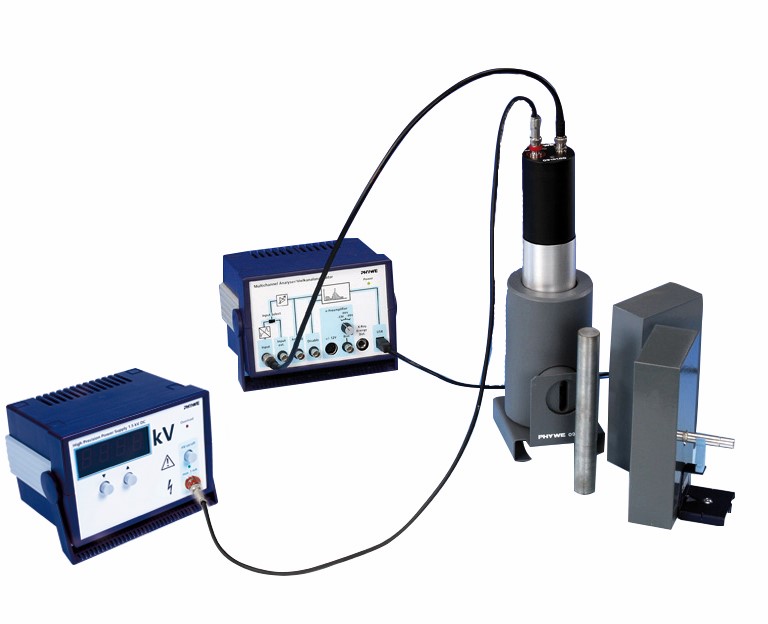Principle
When photons e.g. gamma-radiation collide with electrons in a material, they transfer some of their energy to the electrons, causing the photons to scatter at different angles. The scattered photons have a longer wavelength (lower energy) compared to the incoming photons. This change in wavelength, called the Compton shift, can be determined and it depends on the scattering angle. The experiment confirmed that light behaves as photons with quantized energy, supporting quantum theory and provides evidence for the dual nature of electromagnetic radiation.
Benefits
- Experience the essence of the Nobel Prize: Compton (1927)
- Nobel Prize experiment can be performed by students within some hours
- Impressive second proof of the wave-particle dualism
- Use of a gamma detector in combination with a high precision power supply guarantees good and reproducible results
Tasks
- Calibrate the measuring set-up with the aid of a Cs-137 calibrating source (37 kBq) and a Na-22 source (74 kBq).
- Measure the energy of the Cs-137 661.6 keV peaks scattered at different angles and calculate the Compton wavelength from the readings taken.
Learning objectives
- Corpuscle
- Scattering
- Compton wavelength
- g-quanta
- de Broglie wavelength
- Klein-Nishina formula

